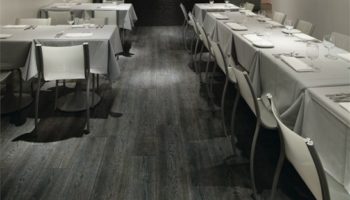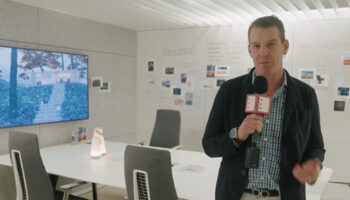Eco-Cem: Environmentally Friendly Fiber Cement
Cement is a popular material in South Florida. I should know, since I was born and raised in Miami. This choice makes sense, because cement does not rot or rust. More importantly, it resists humidity (possibly the number one destroyer of homes outside of the dreaded hurricane). Eco-Cem has all of these qualities (plus, it is impact, termite, and vermin resistant) in a nicer package—Eco-Cem is made of recycled materials composed of 80% cement and 20% cellulose fibers.
Eco-Cem. Manufactured by Eco-Cem.
Recycled Cementitious Panel and Tile

Environmentally friendly Eco-Cem is a panel and tile with multiple interior and exterior applications. From flooring to countertops, exterior cladding to interior cladding, bathroom partitions to shelving, Eco-Cem can be used in myriad ways. Given the material’s available colors, Eco-Cem is perhaps limited only by the architect’s or designer’s imagination. The current available hues are wide-ranging: Coal Grey, Windsor Grey, Natural Grey, Tibet Gold, Safari Brown, Celadon Green, Deco Coral, and Clove Brown. In South Florida, the Deco Coral is the color of choice, especially for projects on Miami Beach.

Eco-Cem is not only composed of recycled content; it also improves air quality because it is permeable. This means that Eco-Cem breathes, letting moisture exit through the material. For exterior cladding, Eco-Cem is an excellent choice for tropical cimates. The company has already completed multiple projects in Italy, where Eco-Cem’s humidity-resistant characteristic is much appreciated.

About the Manufacturer: Eco-Cem is a Miami-based company that manufactures an eco-friendly cementitious board for interior and exterior applications, including flooring, interior and exterior cladding, countertops, shelving, and bathroom partitions. Composed of recycled content (80% cement and 20% cellulose fibers), Eco-Cem is a green alternative to traditional cement: it resists rot, rust, and humidity.


Leave a Reply